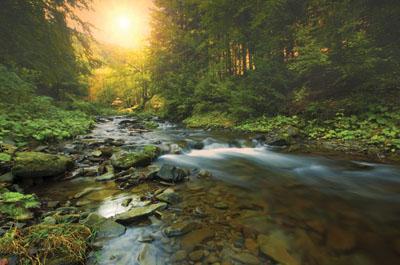EPA Science Matters Newsletter: Ecosystems and Climate Change (Published January 2014)
To help communities plan for the future, EPA researchers are exploring the links between climate change and ecosystem services.

Increasing temperatures, unusual storms, and fluctuating coastal salinity levels. These are just a sample of events driven or made worse by the effects of climate change, which could potentially disrupt ecosystems and the benefits ecosystems provide our communities.
EPA researchers are exploring the impacts that climate change may have on ecosystems. The research is helping communities better plan for and adapt to expected impacts to ecosystems. A few examples of this research are listed below:
- Climate-Ready Estuaries - EPA researchers are working with the National Estuaries Programs and coastal managers to learn more about the risks estuaries face due to a changing climate. This research will help coastal managers and others develop the capabilities (“adaptation strategies”) to reduce the effects of global climate change.
- Climate Change and Plant Diversity - EPA researchers are exploring the impacts that climate change and nitrogen deposition have on U.S. biodiversity and ecosystems by studying herb diversity in three geographic-based ecosystem types: Northeast forests, Midwestern prairie-savannahs, and Southwestern coastal sagescrub. Using this work, along with other published data and the U.S. Forest Service Forest Inventory and Analysis database, EPA researchers are developing a model that will help land-use managers identify species and areas that are sensitive to climate change and nitrogen deposition.Additionally, this work will help evaluate how key ecosystem benefits or services may change in the future and will inform approaches to reduce the impacts of climate change and nitrogen deposition.
- Identifying Vulnerable Species and Habitats - To help protect coastal resources and community stability, EPA researchers are cataloging approximately 15,000 aquatic species, including their habitats, spawning locations, and life-cycles. These species span across Pacific coastal estuaries, from Baja, California to the Arctic.
By combining this data with information on climate related habitat factors, such as water temperature, salinity, and depth, the researchers can identify potential vulnerabilities for each species. This is the first step in building decision-support tools that will identify vulnerabilities of coastal species and their habitats.
